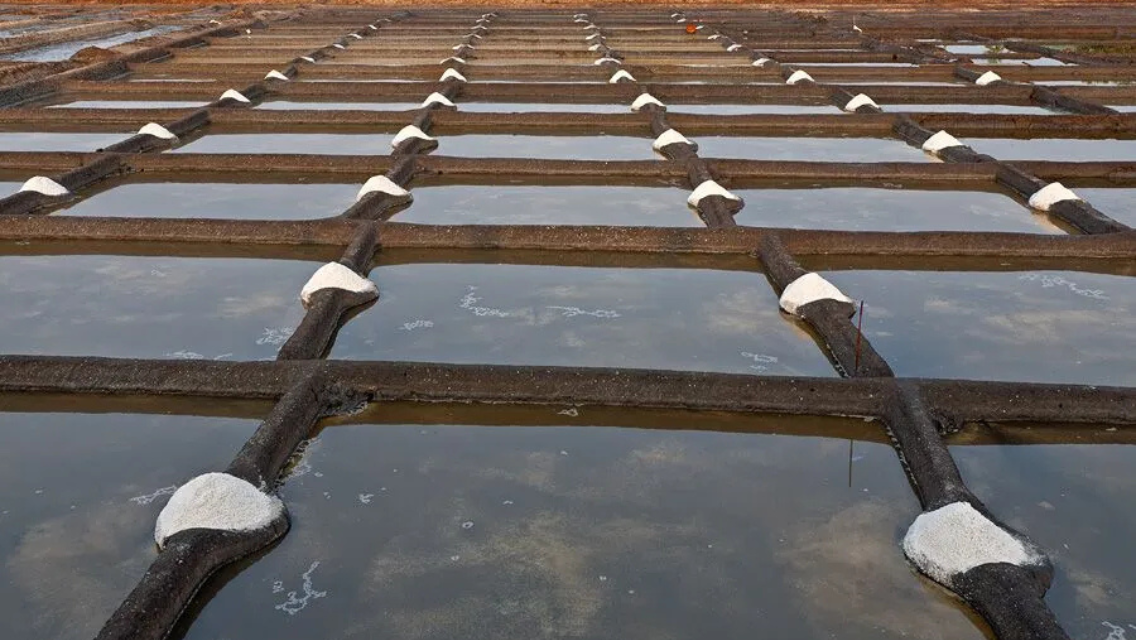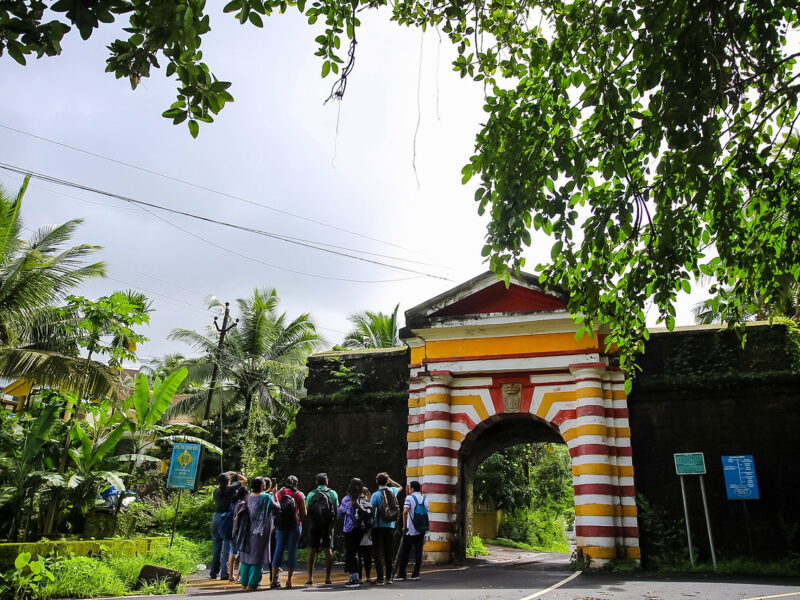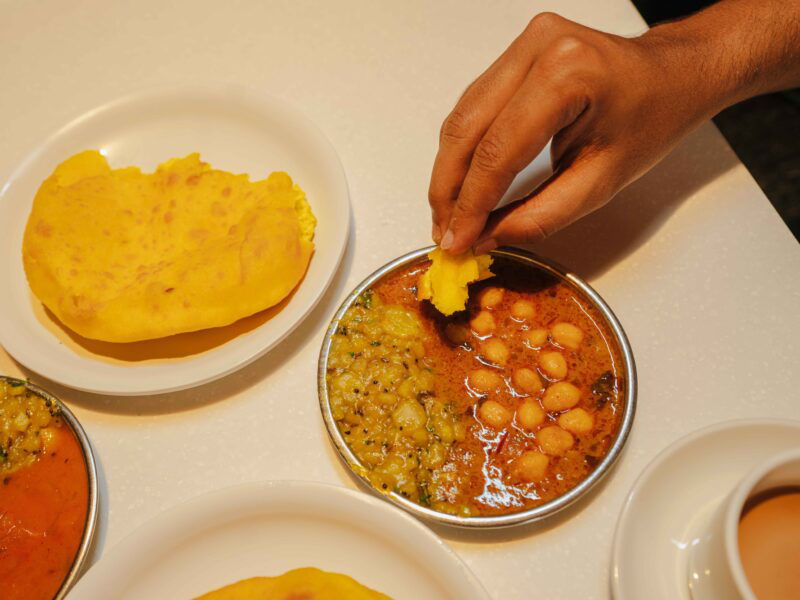Salt, a ubiquitous ingredient found in kitchens around the world, plays an essential role in enhancing the flavours of our meals. It comes in various forms such as Common Salt (Sodium Chloride), Rock Salt (Halite), Black Salt (Kala Namak), Pink Salt, Sambhar Salt, Khar (Alkaline Salt), Fleur de Sel, Bamboo Salt, Lake Salt, Sea Salt, Mineral Salt Deposits, and Epsom Salt. Being a coastal state, Goans have been producing sea salt, also known as solar salt.
Sea salt is produced by collecting seawater in shallow ponds or basins, allowing it to evaporate under the sun’s heat, leading to salt crystals forming. These crystals are harvested, washed, and dried to create sea salt for various culinary, industrial, and medicinal purposes. While it has been a rich traditional practice in Goa, the consumption of sea salt is slowly deteriorating.
This blog delves into this lesser-known world of salt-making in the coastal paradise of Goa, India. Goa’s salt production holds historical significance and distinct characteristics that set it apart from other varieties.
Goa and its Role in Salt Production
Nestled along the southwestern coast of India, Goa has been a noteworthy contributor to the country’s salt production for centuries. The sprawling landscape of salt pans, often referred to as “mitagors,” has been a key player in meeting India’s demand for this essential mineral. These expansive pans, reflecting the vibrant hues of the sky, serve as a testament to Goa’s commitment to salt production.
“The Greek word Agora means ‘a place for gathering’. The Konkani word for salt pans in Goa was earlier mitache agor, and now agor. The community which owned and was involved in salt farming was known as mitt-gaudi. In my childhood, they were called mittkars. They sold the salt door to door, they gathered and were the owners of agors.”, Reyna Sequeira in her thesis refers to the salt farmers as Mitagars.
The Goan salt-making community
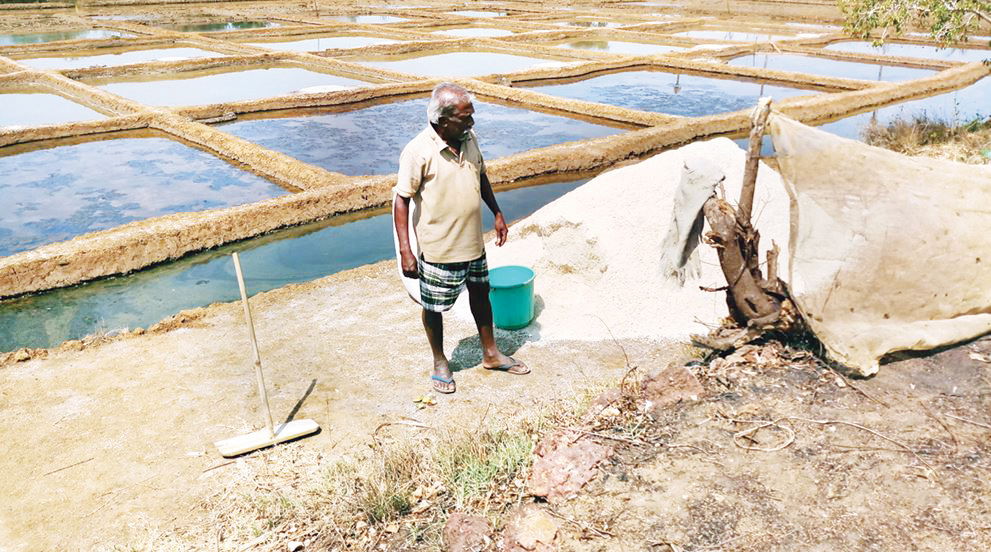
Salt pans are scattered across various talukas, with North Goa’s Tiswadi and Pernem regions being prominent players. If one travels to Panaji via Santan, one gets to see the salt pans or mitagors with heaps of salt piled up along the shoulders of the road in the Summer. In Pernem, the salt farms are in the western region. In fact, there is a place called Agarwada, near Mandrem which caters to salt farming.
The community that owns the salt pans goes by the surname Agarker or Gaude (which according to them is derived from mitt-gaude – the Gaudi community of Goa). While most of them are still engaged in salt farming, some have moved on to other trades for sustenance.
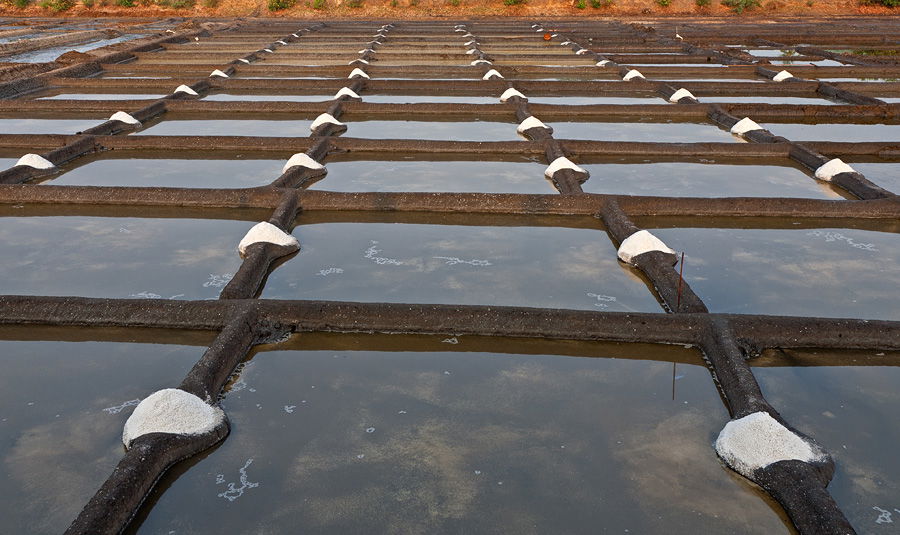
All the traditional mittkars sell the local salt in payali, an age-old weighing system, and not in kilograms. Payali is generally used for rice, not salt.
The tradition of salt farming is deeply rooted in these areas, with families and communities dedicating themselves to this trade. The practice traces its origins back in time, showcasing a harmonious blend of tradition and innovation.
Advantages of Goan Salt in Culinary Delights

Goan salt, distinct due to its mineral impurities and local harvesting techniques, holds a unique charm in the culinary world. While the laid-down standards for salt might not permit these impurities, they bestow upon Goan salt an exceptional flavour profile. Additionally, Goan sea salt contains iodine, benefiting health concerns like thyroid function and brain development. However, the presence of impurities has led to its redirection from kitchen tables to industrial uses and even as fertilisers in coconut plantations.
The Decline and Revival of a Tradition
Regrettably, the age-old tradition of salt-making in Goa has faced a decline over the years. Multiple factors have contributed to this decline, including changes in labour dynamics and the availability of cheaper industrial salt. This decline raises concerns about losing a cultural and historical practice that has stood the test of time.
Recognizing this threat, there has been a growing realization among locals and visitors alike about the importance of preserving this tradition. As a community effort, revitalizing salt-making in Goa requires the fusion of traditional knowledge with modern techniques. By valuing the unique qualities of Goan salt and actively seeking ways to promote it, both locals and tourists can play a vital role in reviving this fading tradition.
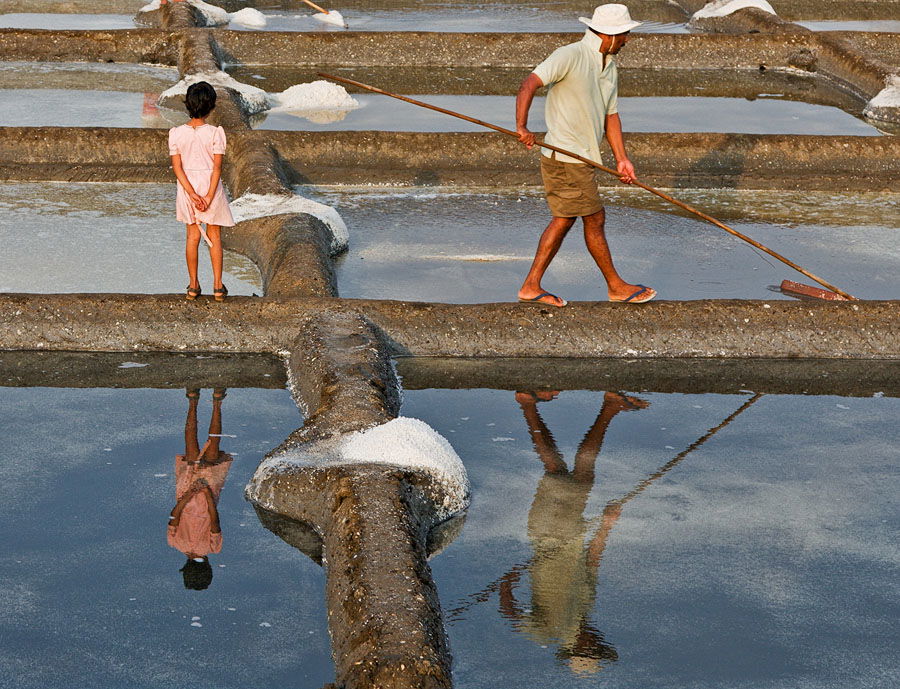
“ Today, lands are under private ownership which are leased to the mittkars who are no longer interested in continuing with this work. This means labour has become scarce and most of it comes from Gokarna, where you’ll find a lot of salt pans. These workers have the knowledge and hence are often found working in Goa. Even then, as compared to about 100 years ago, there are less number of salt pans today. The largest number of salt pans are in Kurka. Add to this the pollution in the water from sewage released by the Casinos in Goa and microplastics that have further deteriorated the purity of solar salt produced.
The demand for solar salt has decreased due to commercial brands like Tata. However, people who are switching to organic foods are opting for solar salt. Also known as maddyanche mith, the solar salt from Goa is still used in the smaller villages.”, says Tallulah D’Silva.
Conclusion: Salty Pathways to Resurgence
As we journey through the sunlit salt pans of Goa, we uncover a tale of tradition, flavour, and community resilience. Goa’s salt-making tradition, though facing challenges, still holds the potential to make its mark on the culinary landscape. By valuing the unique qualities of Goan salt, recognizing its significance in local culture, and advocating for its use in culinary arts, we can collectively contribute to the revival of this age-old tradition. Let’s unite in preserving this hidden gem of Goa, ensuring that its legacy continues to enrich both our palates and our heritage.
Discover Goa’s salt-making practices with a Soul Travelling trail and if you’d like to know more, check out this thesis by Reyna Sequeira.
